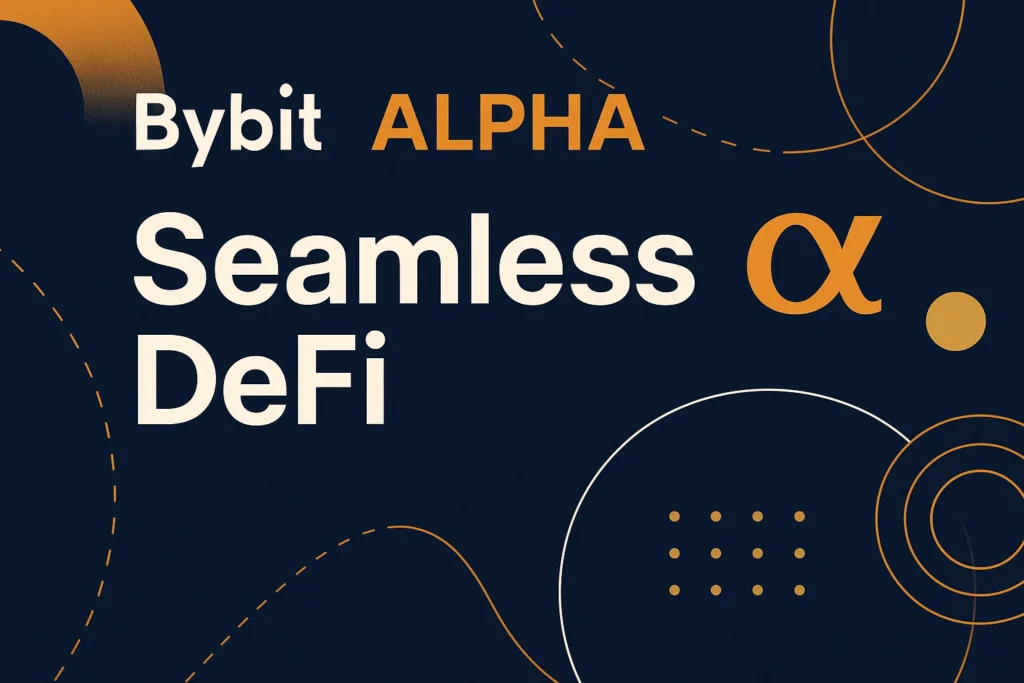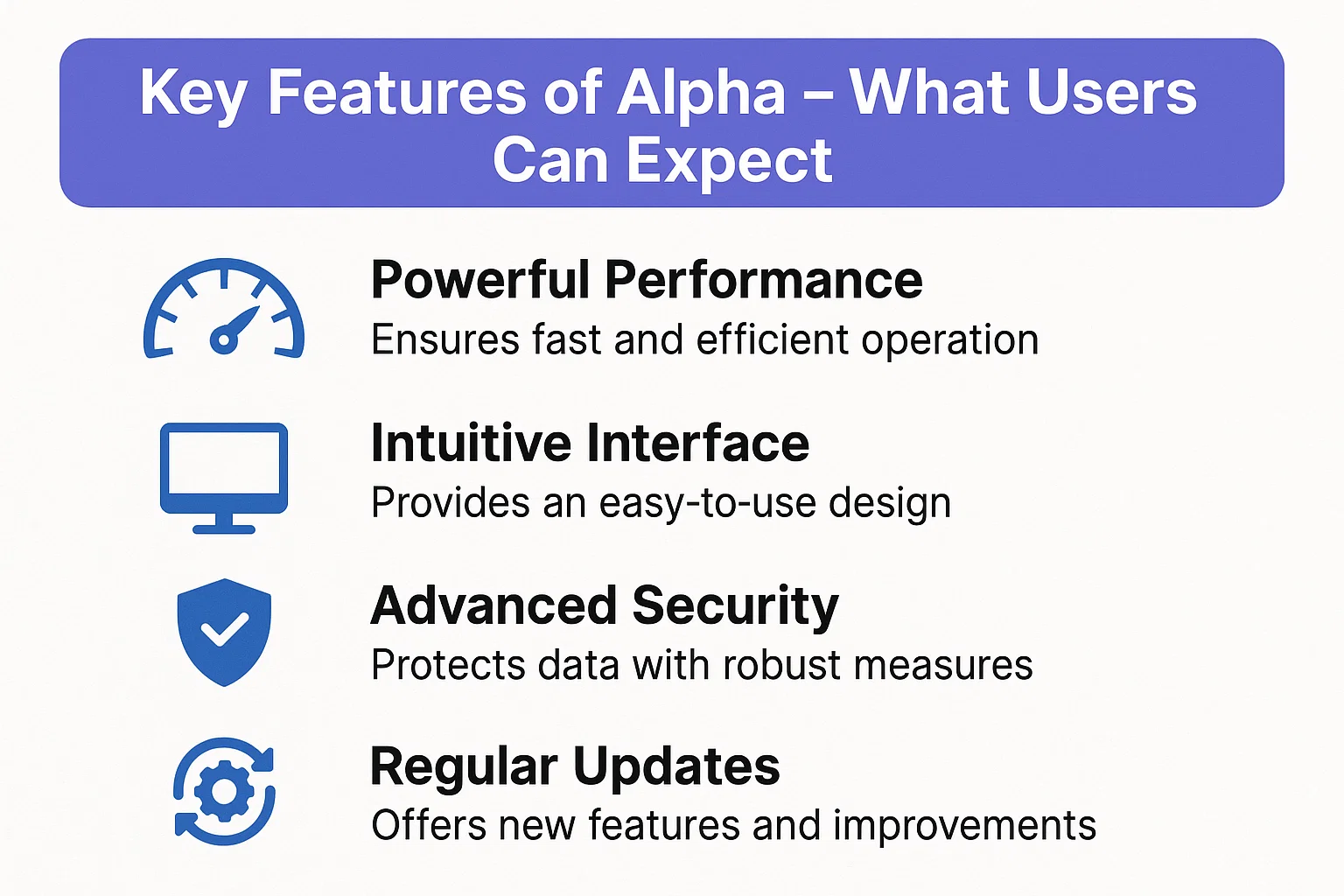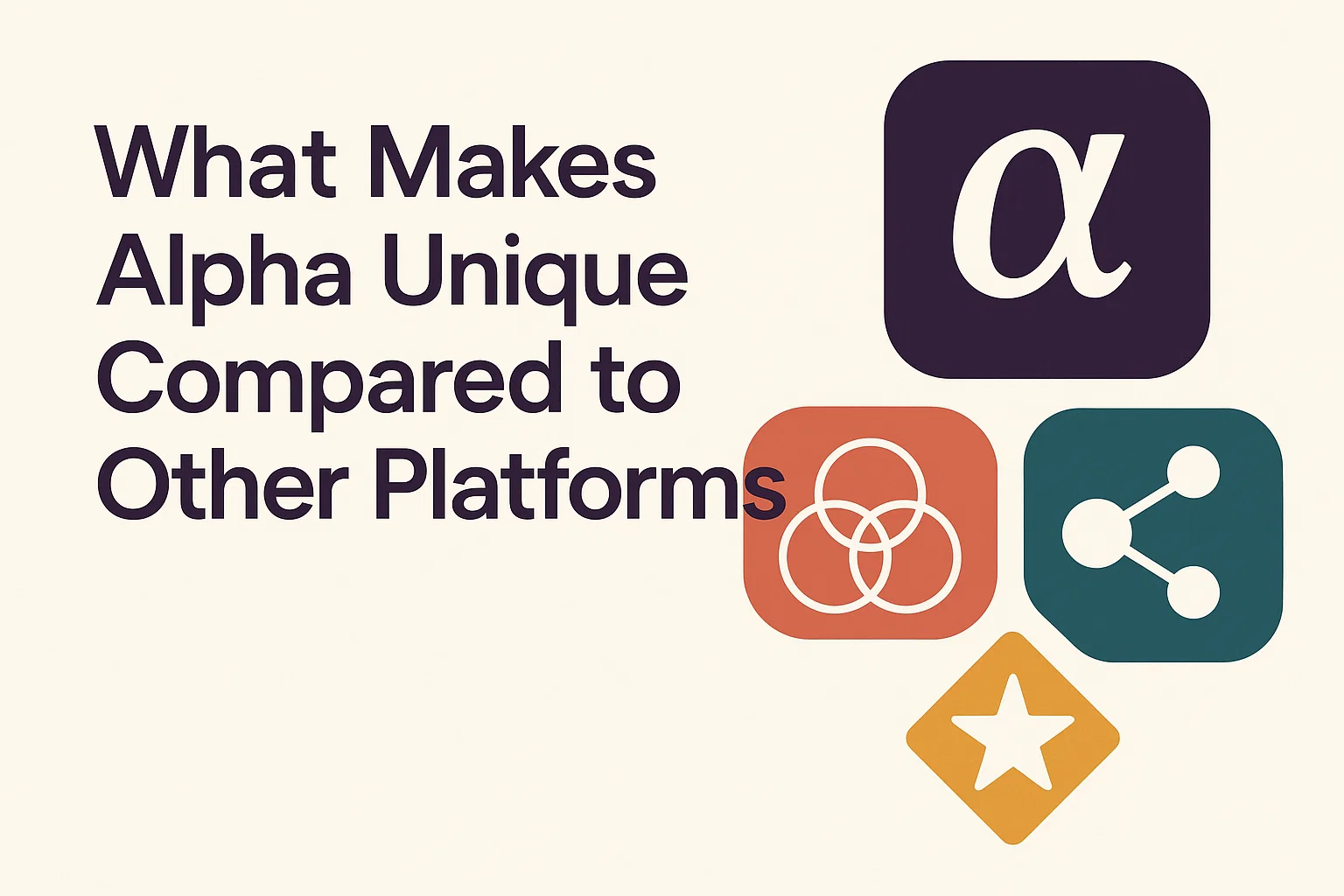Alpha, signalling a strategic shift in how users engage with on-chain trading. The rebrand isn’t merely cosmetic; it reflects a deeper change in approach — one that emphasises simplicity, efficiency, and broader access to the DeFi ecosystem. As many traders and investors feel overwhelmed by the complexity of setting up wallets, managing gas fees, and navigating multiple protocols, Bybit Alpha Rebrand Seamless DeFi: Bybit’s new offering promises to streamline the process and deliver alpha-grade opportunities in one unified platform. With this article, we’ll explore why this rebranding matters, what new features it brings, how it impacts the DeFi and CeDeFi space, and what users should look out for in the evolving landscape of on-chain trading.
What’s Behind the Rebrand:Bybit Alpha Rebrand Seamless DeFi
The Strategic Shift from Web3 to Alpha
Bybit’s decision to rebrand its Web3 arm to Alpha is grounded in a broader strategy to simplify access to on-chain trading and DeFi protocols. According to the company’s announcement, the rebrand reflects its mission “to deliver smarter strategies, stronger yields and continuous innovation” by making on-chain asset trading “faster, simpler and smarter”. In doing so, Bybit is aiming to merge the ease of a centralized exchange (CEX) with the innovation of decentralized finance (DeFi), creating a CeDeFi environment where users can seamlessly toggle between different types of assets and protocols.
The term Alpha itself is symbolic: it conveys the idea of leading, of capturing extra returns or early advantages in the market. By naming the product Alpha, Bybit is signalling that users who adopt this platform might access opportunities ahead of the curve — from emerging tokens to novel yield strategies. This is more than marketing; it is a reflection of how the exchange intends to position itself in the competitive crypto ecosystem.
Why the Timing Matters
This rebrand also comes at an opportune moment in the digital asset space. The effort to bring DeFi to the mainstream has often been hampered by technical barriers — complex wallet setups, gas fee management, multi-chain fragmentation, and unfamiliar user interfaces. Bybit’s move addresses these pain points head-on. For example, the new Alpha platform allows traders to use their existing Bybit account without needing to establish separate wallets or worry about gas tokens. The timing is significant because the crypto industry is entering a maturity phase where user experience and accessibility are becoming as important as protocol innovation.
In addition, Bybit has previously announced a strategic optimisation of its Web3 offerings — phasing out several underutilised services to focus resources on core on-chain tools. The rebrand to Alpha thus appears as the natural next step: consolidating, simplifying, and refocusing to deliver a compelling user-friendly interface to DeFi.
Key Features of Alpha – What Users Can Expect
One-Click On-Chain Access
Among the headline features of Bybit’s Alpha platform is the promise of one-click access to on-chain trading without the typical Web3 hurdles. Users can trade directly via their Unified Trading Account (UTA) on Bybit — no separate wallet setup, no gas tokens to manage, no bridging hassle. This removes a major barrier to entry for many retail users and opens DeFi participation to those who previously found the technical requirements intimidating or too fragmented.
Because the UTA allows both centralized and decentralized asset trading in one account, it effectively collapses the boundary between CEX and DeFi. You don’t need to move funds out of your exchange wallet, switch between interfaces, or manage multiple platforms. The simplicity of the experience is a key differentiator for Alpha.
Curated Assets, Unified Experience
Another significant feature is how Alpha curates on-chain assets and integrates them seamlessly within Bybit’s ecosystem. The platform promises curated listings of trending tokens, with enhanced discovery tools like an “Alpha Radar” to track emerging opportunities.Bybit emphasises a rigorous token screening process, aiming to bring higher-quality assets to users and reduce the noise and risk often associated with the early token-listing environment.
The unified experience also spans across blockchains. For example, Alpha provides direct access to the SOL (Solana) ecosystem and other high-growth networks, all from within the same interface. This allows traders to explore diverse ecosystems without leaving the Bybit platform.
Future-Forward: Yield Strategies & CLMM Tools
While the initial release focuses on the streamlined trading experience, the roadmap for Alpha includes deeper DeFi integrations: liquid staking, concentrated liquidity market maker (CLMM) tools, arbitrage options across CEX and DeFi — effectively turning the platform into a full-blown on-chain strategy hub. For example, Bybit has communicated that CLMM functionality will be integrated by the end of 2025, allowing users to stake assets and earn liquidity yields through the UTA account without external wallet connections. This forward-looking feature positions Alpha not just as a trading front-end but as a strategic yield and asset-management platform.
Implications for the DeFi and CeDeFi Landscape
Lowering the Barrier for Retail Adoption
By simplifying the interface and removing common friction points (wallets, gas, bridging), Bybit Alpha enhances the accessibility of DeFi to a broader audience. Many users have been hesitant to venture into DeFi because the user experience remains fragmented and technical. The unified account model that Alpha offers may lead to increased mainstream adoption of on-chain trading and yield-earning. This is particularly meaningful in regions where users may lack deep Web3 knowledge or prefer a familiar exchange experience.
Centralised Exchange Meets DeFi Innovation
The convergence of CEX and DeFi functions in a platform like Alpha signals a broader trend: centralised exchanges are increasingly integrating decentralised features rather than remaining purely off-chain. Bybit’s move illustrates how major exchanges can serve as gateways into DeFi, leveraging their existing user base, safety infrastructure, and regulatory frameworks while offering access to the innovation of blockchains. For users, this means fewer platform-hops, reduced complexity, and better liquidity.
Competitive Pressure and Ecosystem Evolution
With Bybit making this leap, other exchanges may feel pressure to enhance their DeFi-onboarding paths as well. The rebrand demonstrates that a simpler user experience is now a differentiator. At the same time, DeFi protocols may find CEX integrations increasingly vital if they aim to reach a mass market. This dynamic could accelerate the evolution of hybrid protocols that combine exchange-like functionality with decentralised infrastructure.
Why This is Good News for Traders and Investors
Enhanced Efficiency and Speed
Alpha promises faster execution of trades and strategies by sidestepping many of the manual steps typically associated with DeFi. That means less friction, lower potential for errors, and more time for users to focus on strategy rather than platform logistics. The fact that you can use your existing Bybit account and access both spot and on-chain markets without switching platforms is a material improvement in usability.
Access to Alpha Opportunities
With curated listings, early-access tokens, and yield strategies integrated, Alpha positions itself as an opportunity hub. For traders seeking alpha — meaning excess returns or early mover advantage — this platform may provide new angles. Bybit’s statement emphasises “discover true alpha opportunities on-chain” as part of the rebrand. While return is never guaranteed, the model gives users access to emerging assets and yield tools that were often siloed or difficult to access.
Unified Risk and Asset Management
Managing assets across fragmented wallets and platforms increases risk (for example, forgetting private keys, bridging to the wrong chain, or encountering malicious contracts). The unified account model that Alpha offers simplifies custody, oversight, and asset management. For investors juggling both centralized holdings and decentralized strategies, the ability to see everything in one place reduces complexity and potential risk.
Considerations & What to Watch Out For
Regulatory and Geographic Limitations
As with all crypto and DeFi services, regulatory risks remain. Not all features may be available in all jurisdictions, and users should verify local compliance before engaging. Bybit’s announcement notes that “products and services referred to here may not be available in your region.As Alpha expands its yield tools and on-chain integrations, regulatory scrutiny may increase — especially around user protections, token listings, and custody. Traders should stay informed about the legal status of DeFi features in their country.
Token-Listing Risk and Market Volatility
While the curated asset model reduces some noise, early-stage tokens still carry significant risk. A platform offering early access to emerging tokens may also be subject to token volatility, lack of liquidity or regulatory uncertainty. Users should apply their usual due diligence. Just because a platform simplifies access does not remove the inherent risks of on-chain markets, including smart-contract risk, token listing risk, or market downturns.
Security & Custody in Hybrid Model
Alpha’s model blends CEX custody with on-chain trading access. Users should remain aware of custody assumptions, smart-contract exposures, and platform risk. While Bybit’s track record and infrastructure may lend confidence, the hybrid nature of CeDeFi means users should monitor how funds are held, how staking or yield is generated, and whether external wallets are involved. Because part of the appeal is a reduced wallet setup, traders may inadvertently overlook key security practices.
How to Get Started With Alpha: A Step-by-Step Intro
Step 1: Sign in to Bybit and Access UTA
Existing Bybit users can access the Unified Trading Account (UTA) directly through the platform. New users will need to create and verify a Bybit account. Once inside, they can access Alpha features via the designated section of the platform, effectively entering the on-chain trading environment without needing separate wallets. The announcement states: “Trade directly with your Bybit account (UTA) – No wallet setup or gas tokens required.
Step 2: Explore Curated On-Chain Assets
Within Alpha, users will find tokens and assets that are hand-picked and vetted by Bybit’s listing team. Using features like the soon-to-roll-out “Alpha Radar”, traders can discover trending tokens, view liquid pools across chains, and execute trades. This simplified discovery layer is designed to lower the barrier for users unfamiliar with multiple DeFi dashboards.
Step 3: Execute Trades and Participate in Yield Strategies
With a few clicks, users can buy, sell, or stake on-chain assets directly from their account. No external wallet transfer, no gas token management. In upcoming updates, the platform will add more sophisticated yield strategies — for example, liquid staking or CLMM pools. This will allow users to transition from simple trading to full-blown yield participation.
Step 4: Monitor and Manage Within One Dashboard
One of the major upsides of Alpha is unified asset management. Traders can view their centralized and decentralized holdings in one place. They can monitor yield strategies, staking positions, and token performance without juggling multiple platforms or wallets. This reduces operational friction and allows a clearer overview of performance and risk. Users should still practice good security hygiene and understand the underlying mechanics of any yield product they use.
What Makes Alpha Unique Compared to Other Platforms
Single-Account Simplicity
While many DeFi protocols or wallets require the user to move assets between accounts, chain networks or platforms, Alpha integrates everything into the existing Bybit account framework. That means less mental overhead, fewer steps, and a more “click-and-trade” experience. As one commentary noted: “If you’ve ever hesitated to dive into DeFi because of wallets, gas fees or confusing interfaces, this platform could be your answer.
Curated, Quality-Focused On-Chain Access
Rather than providing an open pool of every emerging token (which can carry high risk and noise), Alpha emphasises a curated list of assets and strategies, backed by Bybit’s screening process. This approach may appeal to users who want simplified access without sacrificing quality. Bybit’s shift earlier in 2025 to focusing on core on-chain services and phasing out under-utilised products demonstrates their focus on refinement over expansion.
Roadmap of Yield & Hybrid Tools
Alpha’s upcoming features (liquid staking, CLMM, CEX-DeFi arbitrage) make it more than a trading front-end; it is a strategic asset-management ecosystem. Many other platforms stop at token trading. Alpha’s ambition lies in combining trading, yield generation, and discovery within one experience. This positions it as a potential one-stop hub for on-chain strategy. The statement “Alpha truly captures our product’s mission – to empower every user to capture on-chain opportunities effortlessly and maximize their returns.
Potential Challenges and How Bybit Might Address Them
Educating Users and Managing Complexity
Even with simplified interfaces, on-chain trading and DeFi still carry conceptual challenges. Users need to understand staking, liquidity, yield mechanics, chain risk, and smart-contract exposure. Bybit will need to ensure clear educational support, intuitive dashboard,s and risk disclosures to prevent user missteps. As on-chain strategies become more complex, user education will be a key factor in adoption and trust.
Liquidity and Token Listing Risk
To deliver meaningful trading and yield opportunities, Alpha must maintain sufficient liquidity and thoughtful token-listing practices. With curated assets comes the responsibility of rigorous vetting and ongoing monitoring. If liquidity is thin or if token listings underperform, user trust may erode. Bybit’s emphasis on rigorous screening helps, but execution will matter. The earlier move in April 2025 to phase out underperforming Web3 services shows that Bybit is focusing on quality, not just quantity.
Navigating Regulation and Compliance
As DeFi becomes more accessible via centralized platforms, regulatory oversight will increase. Bybit will have to maintain compliance across jurisdictions, manage AML/KYC issues, and anticipate regulatory scrutiny — especially given the hybrid nature of CeDeFi models. Users should remain aware that features may vary by region and that legal risk remains. Transparent communication by Bybit will be essential to maintain credibility.
The Bigger Picture: What This Means for the Market
The emergence of platforms like Alpha signals a maturing of the crypto ecosystem. We’re moving beyond early experimental phases into an era where usability, accessibility, and integrated strategy matter. By bridging the gap between centralized exchanges and decentralized protocols, Bybit is helping to unlock DeFi for broader audiences.
This could accelerate mainstream adoption of on-chain finance. As more users can access yield strategies, token discoveries, and cross-chain functionality through familiar platforms, the boundaries between TradFi, CEX, and DeFi become increasingly fluid. Platforms that deliver seamless experiences are likely to define the next wave of growth.
For the industry, this also raises the bar for wallet providers, DeFi protocols and exchanges. If major players are offering unified access and simplified UX, others will need to match the convenience and strategy integration. As a result, we may see consolidation, refined product offerings, and ecosystems that emphasise discovery, strategy, and yield over sheer novelty.
Conclusion
The rebranding of Bybit’s Web3 arm as Alpha marks a significant milestone in the evolution of decentralized finance access. By prioritizing one-click on-chain trading, unified account access, and curated asset and yield strategies, Bybit is making a clear bet that simplicity plus strategy will drive the next phase of growth in the crypto space. For traders and investors, this means fewer barriers, more opportunities, and a cleaner user experience when engaging with DeFi.
Of course, risks remain: education, token volatility, regulatory compliance, and custodial practices all matter. But for those looking to capture alpha in the on-chain world without the usual setup hassle, Alpha presents a compelling proposition. As the CeDeFi trend continues to gather momentum, platforms that combine centralized ease with decentralized power are likely to lead the way — and Bybit Alpha is positioning itself right at the front of that wave.
FAQs
Q: What exactly is Bybit Alpha, and how does it differ from Bybit Web3?
Bybit Alpha is the rebranded platform formerly known as Bybit Web3. While Web3 had a broad set of wallets, DApps, and decentralised features, Alpha simplifies this into a unified trading and on-chain asset access platform. It emphasises one-click on-chain trading, no wallet setup or gas token requirements, and a unified trading account (UTA) to access both centralized and decentralized assets.
Q: How does the “one-click” on-chain trading work in Alpha?
With Alpha, users trade through their existing Bybit account (UTA). They do not need to connect an external wallet, manage gas tokens, or switch between multiple platforms. They simply log in, choose an asset or yield strategy, and execute. This reduces friction and enables faster access to on-chain token opportunities.
Q: Will all features of Alpha be available globally?
Not necessarily. The announcement from Bybit states that “products and services referred to here may not be available in your region. As such, geographic restrictions, regulatory compliance, and local legal frameworks may limit access to certain features in some jurisdictions. Users should check availability in their country and any applicable terms.
Q: What yield and strategy tools will Alpha offer beyond simple token trading?
Looking ahead, Bybit plans to roll out advanced DeFi tools such as liquid staking, CLMM (Concentrated Liquidity Market Maker) pools, CEX-DeFi arbitrage tools, and enhanced yield strategies. These features will allow users to stake assets, provide liquidity, and earn yields — all within the unified Alpha platform without needing external wallets.
Q: What risks should users be aware of when using Alpha?
Although Alpha simplifies access, users should still consider typical risks of on-chain and DeFi activities: token volatility, smart-contract vulnerabilities, liquidity risks, regulatory changes, and custody considerations. The simplified UX doesn’t eliminate these risks, so due diligence, cautious investmen,t and understanding of underlying protocols remain vital.



